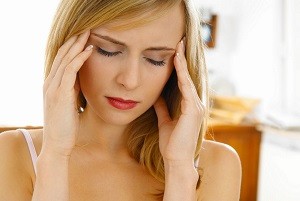Monthly Headaches (Every Month) Types and Causes
Monthly headaches or migraines are often connected with the menstrual cycle and menstruation in particular. It may be a more common occurrence in girls and women. It may even appear to correlate the menstrual periods. However, monthly headaches may occur for other reasons and even men may be affected. It is therefore important to consider other symptoms that may accompany the headache as well as events that may precede the onset of these monthly headaches.
Why do headaches occur monthly?
The term monthly refers to an occurrence that arises at or around the same time every month. Although the body has a 24 hour cycle known as the circadian rhythm and the menstrual cycle is approximately 28 days, monthly headaches may not occur for the same reasons. Instead external factors may be the cause of these recurrent headaches and these factors may occur monthly.
Monthly headaches in females of reproductive age should always be considered in the backdrop of the menstrual cycle. However, it is important to note that cyclical changes in the body rarely follow a 30 day cycle. Some women may have a 30 day menstrual cycle whereas others may have slightly longer or shorter cycles than the average 28 days. Therefore monthly headaches that are unrelated to menstruation should be investigated for external factors.
Causes of Monthly Headaches
There may be various causes of recurrent headaches but repetitive monthly headaches are due to only a few possible causes. The difference between recurrent headaches and monthly headaches is the timing of the head pain. With recurrent headaches, there are episodes of headaches that occurs at varying intervals but usually does not adhere to a 30 day cycle. Monthly headaches on the other hand occur approximately every 30 days.
Read more on uncommon causes of headaches.
Menstrual Cycle and PMS
Menstrual headaches are common among girls and women of reproductive age. It can continue into perimenopause and menopause. Migraines may also be triggered and aggravated in line with changes in the menstrual cycle. These headaches and migraines are associated with the fluctuation in menstrual hormones. However, it is not a norm for all females who are menstruating or prior to menstruation.
Headaches are more common in women who suffer with premenstrual syndrome (PMS). This is a collection of symptoms that arise prior to menstruation (monthly periods) and tends to resolve with or shortly after menstruation. For some women it may start as late as 5 days before the beginning of the periods whereas in other women it can be as early as 10 to 11 days prior to menstruation.
 This timing tends to occur around the same time every month and gives rise to the characteristic monthly headaches. However, it is not only headaches that occur. Other symptoms are also present like menstrual cramps, mood swings, appetite changes, body aches, joint pains, fatigue, abdominal bloating, breast tenderness and changes in bowel habit. It is estimated that 2 in 3 women experience PMS but of varying severity.
This timing tends to occur around the same time every month and gives rise to the characteristic monthly headaches. However, it is not only headaches that occur. Other symptoms are also present like menstrual cramps, mood swings, appetite changes, body aches, joint pains, fatigue, abdominal bloating, breast tenderness and changes in bowel habit. It is estimated that 2 in 3 women experience PMS but of varying severity.
Psychological Stress
Sometimes psychological stress can be cyclical. If the stress occurs frequently or around the same time every month then symptoms like headaches may arise. This psychological stress may be linked to interpersonal, social, occupational or financial events that arise on monthly basis.

There may be other symptoms characteristic of psychological stress which may accompany these monthly headaches. This includes symptoms like:
- Mood swings and anxiety
- Sleeplessness
- Fatigue
- Changes in appetite
- Changes in bowel habit
Factors such as excessive clenching may contribute to temporomandibular (TMJ) dysfunction which in turn can cause headaches. Many of these symptoms of psychological stress overlap with premenstrual syndrome (PMS) in women. It is therefore sometimes not uncommon for monthly headaches associated with stress to be mistaken for PMS and vice versa.
Physical Strain
Physical exertion that arises on a regular basis can be linked to monthly headaches. This is more likely to be a problem when the exertion may cause muscle strain, particularly of the upper back, neck and or head. For example, playing a sport or working out only once every month can cause strain on the body which is not conditioned for the activity. It can also occur with sexual activity.
 Exertional or exercise headaches tend to last anywhere between 15 minutes to 12 hours. Sometimes this type of headache with strenuous physical activity may arise with complications of exertion. Dehydration headaches can occur with physical strain when fluid and electrolytes are lost due to sweating from strenuous activity. Headaches can also occur with trauma that may arise during physical activity. This is known as a post-traumatic headache.
Exertional or exercise headaches tend to last anywhere between 15 minutes to 12 hours. Sometimes this type of headache with strenuous physical activity may arise with complications of exertion. Dehydration headaches can occur with physical strain when fluid and electrolytes are lost due to sweating from strenuous activity. Headaches can also occur with trauma that may arise during physical activity. This is known as a post-traumatic headache.
Medication-Related Headaches
Some women experience headaches when using oral contraceptives (birth control pills). With regards to monthly headaches with oral contraceptive use, the headaches tend to occur during the use of placebos. These “blank pills” or inactive pills results in a drop in estrogen levels which may be the cause of the monthly headaches. It does not occur in every woman using oral contraceptives but does occur in some instances.
Rebound headaches are another type of medication-related headache. It occurs when medication that is used for headaches, such as painkillers, are stopped. The headache then returns and may sometimes be more severe than the initial headache. While a rebound headache does not usually occur at specific intervals, it may occur every month if a monthly prescription is not replenished on time.
Other medication may also cause headaches as a side effect. The headache may persist until the medication is discontinued or changed. Most of the time this does not cause a monthly headache unless the administration of the drug is on a monthly basis.
Monthly Migraines
Migraines may be triggered by many of the same monthly events as discussed above. Many women report the onset or worsening of migraines prior to menstruation or with menstruation. Psychological stress and physical strain that occurs on a monthly basis may also trigger migraines. Therefore migraines in these circumstances arises secondary to other factors.
However, migraines are not always related to these events yet can follow a cyclic pattern. Episodes may not specifically occur every month. It can range from weeks to months. During the episode, the migraine may be present everyday or occur many times in a week. The migraines resolve and there are no further migraines during an asymptomatic phase that may last for weeks to months.
References
- Less Frequent Types of Headaches. Cleveland Clinic
- Birth Control Headaches. WebMD





